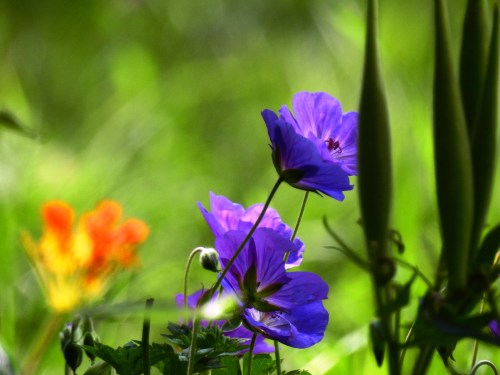
all around as we visited this home in Fitchburg there were flowers.
Posted in Branches, Inspiration, Nature Notes, On the Road, tagged beauty, flowers, gardening, Inspiration, landscapes, nature, nature photography, Photography on September 16, 2018| Leave a Comment »
Posted in Inspiration, Nature Notes, tagged curiosity, Eliot Porter, imagination, Inspiration, James Gleick, landscapes, nature, Nature's Chaos, Photography, storytelling on May 4, 2016| 4 Comments »

It can be hard to read a coffee table sized book while sitting on a Boston subway during rush hour. But that’s what I was trying to do after a visit to the library to retrieve the book Nature’s Chaos, a collaboration between photographer Eliot Porter and writer James Gleick. I sat snugly between, on my left, an older African fellow wearing a very puffy and, I’m sure, warm coat. On my right sat a young Chinese boy wearing a very puffy and, I’m sure, warm coat. The little boy kept getting in trouble with his dad because he was a bit hyper.
I’d been waiting a long time for this book. Carefully, very carefully, trying to respect the space of my neighbors, I opened up the book into a narrow V-shape. I figured the text I could read later, but I wanted a peek at Porter’s vast landscapes. I could see a little but not enough. Wider I opened the book. I peered closely at the sweeping patterns in cracked mud and lava flows. There were leaves on water and sunset clouds. As I lost myself in these scenes, perhaps the book fell open wider still because all of a sudden I noticed something.
Now the African gentleman was a bit more subtle but I could tell he was looking at the book with me. He’d adjust his glasses as I turned a page and every now and then he’d bend over slightly, trying to see the cover to find out what in the world I was looking at. The little boy hadn’t learned how to be subtle. He just peered right over my arm. I didn’t bother looking at his dad. I just began pointing out features on the page to the boy. Occasionally I’d drag my finger along a seemingly mundane scene, like orange flowers in a green field or vines on a tree trunk. I’d say softly, “That’s pretty cool, hunh?” His eyes never leaving the page, he’d nod and say softly, “Yeah.”
On the last page, I made a dramatic show of closing the book and saying in a little louder voice, “And that’s it!” The little boy (and the gentleman too I suppose) slid back into his chair. His father whispered to him. The little boy looked up at me.
“Thank you,” he said.
I smiled. “You’re welcome.”
Posted in Inspiration, Nature Notes, tagged abstract, beauty, Inspiration, landscapes, mussels, nature, Photography, shells on March 15, 2016| 1 Comment »
Posted in Books I Love, Inspiration, Nature Notes, tagged bees, book review, creativity, diy, flowers, gardening, Inspiration, landscapes, nature, Photography, pollinators on February 15, 2016| 2 Comments »
Bees are not the only pollinators in this world but they are a major one. There are many different species of bees. Growing up in Virginia, I’d heard of sweat bees, and knew bumblebees on sight, but it was the honeybee with its soft gold and black coloring that I most thought of when I heard the word bee. I took for granted its production of honey and the wax harvested from colonies for my candles. And I was quick to bat the insect away when I walked through a field of flowers. As for its role as pollinator, I didn’t think too much about that nor did many until reports of colony collapse disorder made national and international news.

photo by cynthia staples
As noted in the introduction of The Bee-Friendly Garden, “over 70 percent of the world’s plants depend on the pollination services of bees, including many nuts, fruits, tomatoes, peppers, or berries.” While the world might survive without bees, it would be a very different place to say the least.

One of the delights of this book is that the authors, a professional garden designer and an ecologist, educate, inspire and encourage. Regarding the U.S., they describe the difference between native bee species and honeybees, and how bees and wasps look similar but behave very differently. Honeybees with their yellow and black banded bodies are probably the most common image of bees, but native bees come in many shapes, sizes and colors, their bodies evolved to collect the pollen from a wide variety of plants, shrubs and trees. Lists are provided by region of bee-friendly garden compositions, and in turns out that many of those same gardens — a mix of annuals, perennials and more — can attract and support other important pollinators like bats, butterflies and hummingbirds.
The book is an incredible resource and reference guide and I would suggest it as a wonderful addition to one’s gardening library. The authors make clear with straightforward content that you don’t need to be a master gardener or landscape designer in order to create beauty around you and do some good in the world as well. As some of you know, I love to give seeds and plants to friends and family who live across the U.S. This year I will certainly be using this book’s regional plants lists to help guide my selection of seeds.

photo by cynthia staples
I received this book from Blogging for Books for this honest review. Detailed book information available via this link: http://www.penguinrandomhouse.com/books/243475/the-bee-friendly-garden-by-kate-frey-and-gretchen-lebuhn/